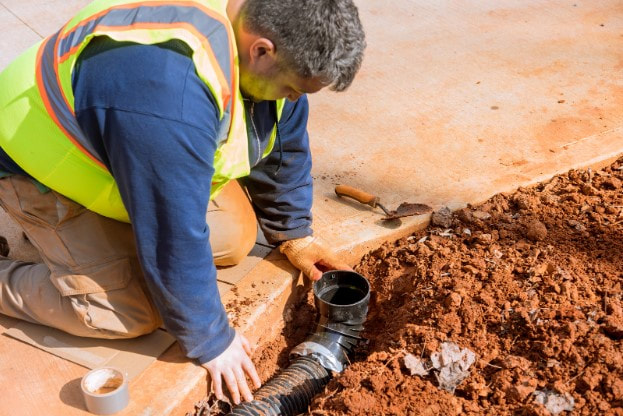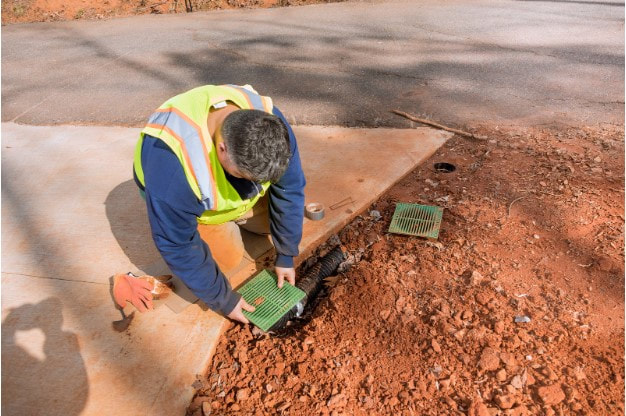|
Water is the lifeblood of our planet, but it can also be the bane of a homeowner's existence when it comes to unwanted moisture and potential damage. Therefore, ensuring your home is well-protected against water damage is crucial, and one of the most effective ways to do this is by installing a perimeter drainage system. In this blog post, we will discuss the importance of perimeter drainage services, how they can protect your home and property, and provide helpful tips for maintaining your drainage system. The Importance of Perimeter DrainageA well-designed perimeter drainage system is essential in safeguarding your home's foundation from the damaging effects of water. A perimeter drainage system can prevent flooding, mold growth, and structural damage by effectively channeling water away from your property. Let's dive into some of the key benefits of investing in perimeter drainage services: 1. Preventing Basement Flooding and Water Damage Basement flooding is a common issue homeowners face, leading to extensive damage and costly repairs. When properly installed and maintained, perimeter drainage systems help direct excess water away from your home's foundation, reducing the risk of basement flooding and water damage. 2. Protecting Your Home's Foundation Water can be highly destructive to your home's foundation, causing cracks, settling, and even complete structural failure in extreme cases. By channeling water away from your property, perimeter drainage services help preserve the integrity of your home's foundation and prevent costly repairs. 3. Enhancing the Value of Your Property A well-maintained perimeter drainage system protects your home and property and can increase its value. In addition, potential buyers often view a functional drainage system as valuable, showing that the property has been well-cared for and is less likely to suffer from water-related issues. Installing Your Perimeter Drainage SystemThe installation process for a perimeter drainage system can vary depending on the specific needs of your property, but some general steps are typically followed: 1. Assessment and Planning Before installing a perimeter drainage system, a thorough assessment of your property is essential. This includes analyzing the slope of your land, soil type, and existing drainage conditions. This information will help determine the most effective drainage solution for your property. 2. Excavation and Installation Once a plan is in place, the area around your home's foundation must be excavated to install the perimeter drainage pipes. These pipes will be strategically placed to ensure adequate water management, directing excess water away from your home and towards designated drainage areas. 3. Backfilling and Landscaping After the perimeter drainage pipes have been installed, the excavated area will be backfilled, and any disturbed landscaping will be restored. Proper backfilling is crucial for maintaining the effectiveness of your drainage system and preventing any potential damage to your home's foundation. Maintaining Your Perimeter Drainage SystemRegular maintenance is vital to ensuring the longevity and effectiveness of your perimeter drainage system. Here are some tips for keeping your drainage system in top shape: 1. Regular Inspections Conduct periodic inspections of your perimeter drainage system, checking for any signs of damage or blockages. In addition, clear any debris that may have accumulated around the system, as this can hinder its ability to function effectively. 2. Cleaning and Flushing Over time, sediment and debris can build up within your perimeter drainage pipes, reducing their effectiveness. Regular cleaning and flushing of your system can prevent blockages and ensure optimal water flow. 3. Repairing Damage Promptly If you notice any damage to your perimeter drainage system, such as cracked or broken pipes, it's essential to address these issues promptly to prevent further complications. Hiring a professional drainage service to assess and repair any damage is highly recommended, as they will have the necessary expertise and equipment to ensure the job is done right. 4. Monitor Changes in Your Property's Landscape Keep an eye on changes in your property's landscape, such as shifts in the soil or new vegetation, as these can impact your perimeter drainage system's effectiveness. If you notice any significant changes, consult a professional drainage service to assess whether your system needs adjustments or modifications. 5. Consider Professional Maintenance Services While homeowners can handle some aspects of perimeter drainage maintenance, it's often beneficial to enlist the help of a professional drainage service. They can provide expert guidance, conduct thorough inspections, and perform necessary repairs or maintenance tasks, ensuring your system remains in optimal condition. ConclusionInvesting in perimeter drainage services is a smart move for any homeowner looking to protect their home and property from the damaging effects of water. A well-designed and maintained perimeter drainage system can help prevent basement flooding, protect your home's foundation, and increase your property's overall value.
By following the tips outlined in this blog post and enlisting the help of professional drainage services when needed, you can ensure your perimeter drainage system remains a reliable and effective safeguard against water-related issues.
0 Comments
Your comment will be posted after it is approved.
Leave a Reply. |
|
|


